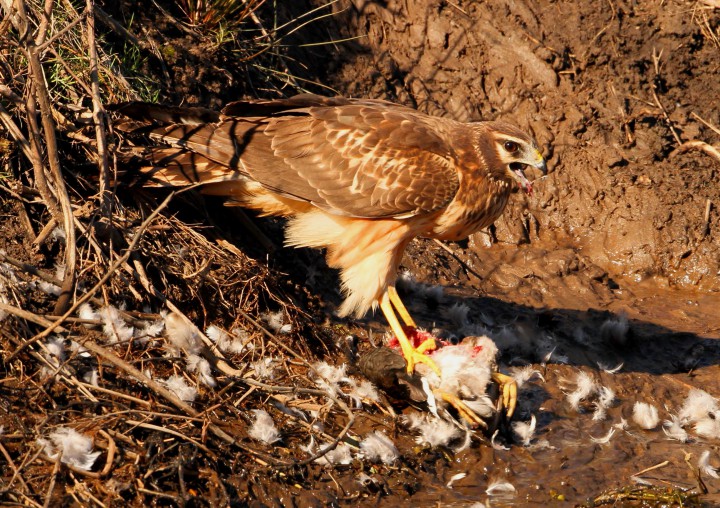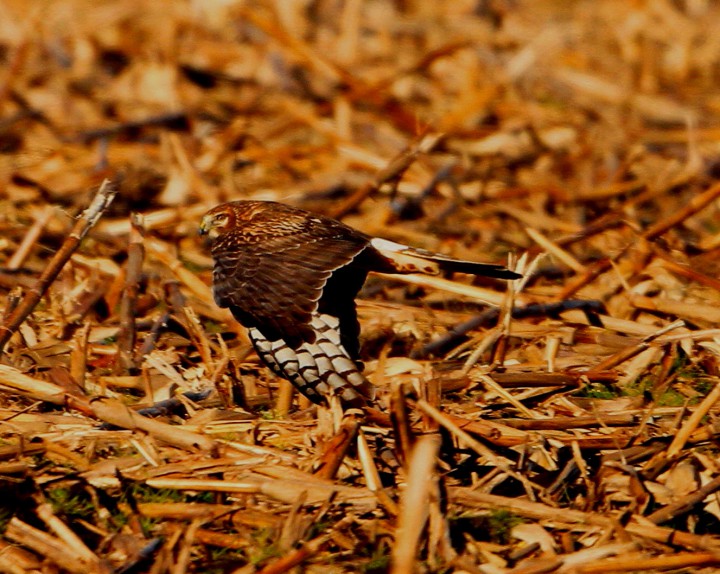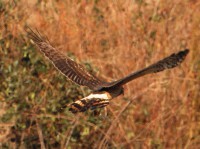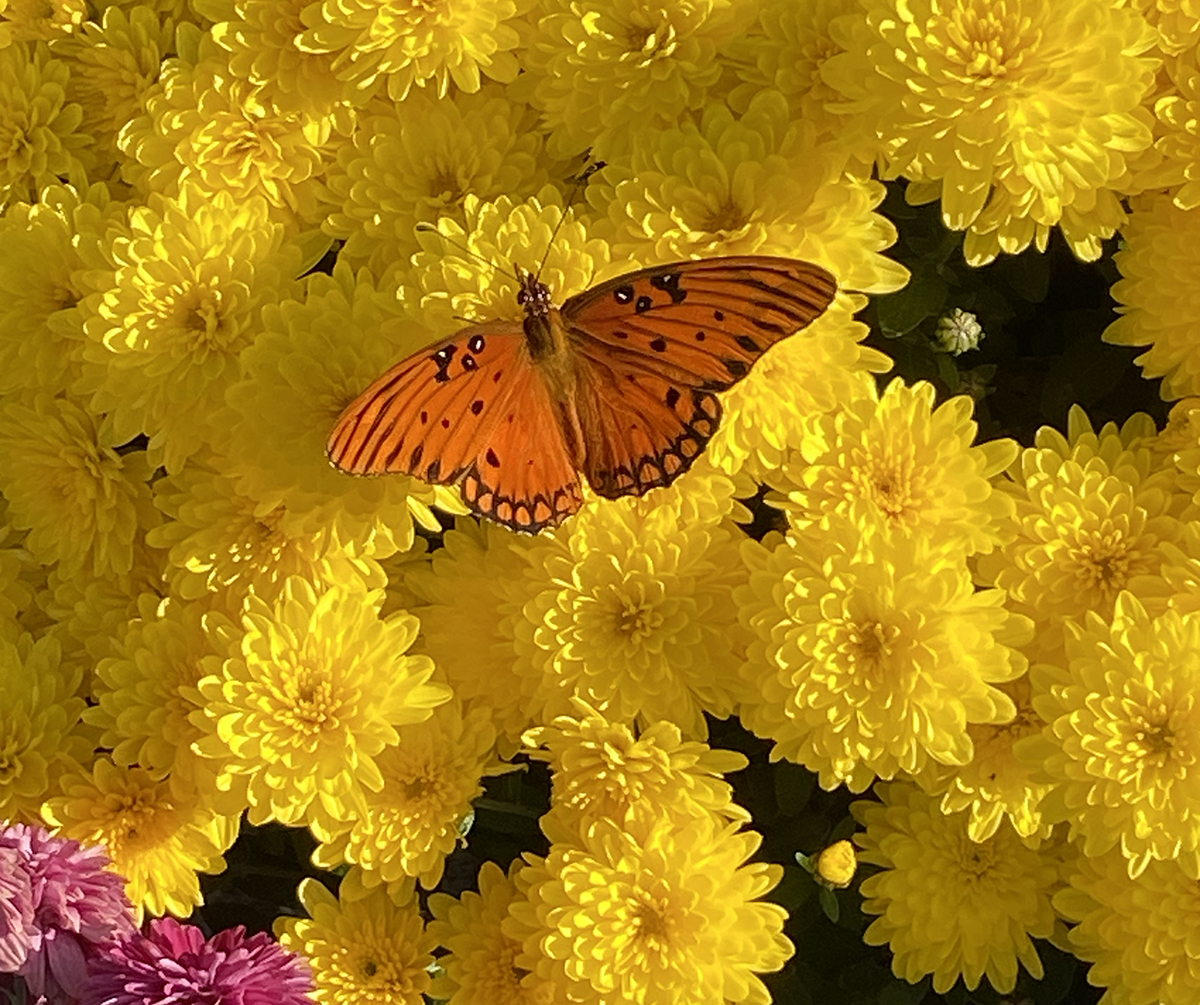
Throughout much of this winter, I have been out and about retreating into the solitude of nature by exploring the national seashores and wildlife refuges of coastal North Carolina. Throughout my excursions, there is one animal, a bird, that is a constant no matter where I roam.
Over the lumpy dune fields, salt marshes and open fields, this hawk is a reliable companion. Easy to spot, this slender bird can be seen flying low over open areas ready to pounce on unsuspecting rodents, reptiles, birds and even insects. It appears to be in no hurry, a lazy flight with a flutter and a wobble here and there, almost like a butterfly at times. Its most identifiable field marking is a distinctive, quite visible, white rump patch that makes me think of chipmunks and chuckle with laughter, but we’ll get to that later.
Supporter Spotlight

The northern harrier, also referred to as the marsh hawk and gray ghost, is a migrant along the coastal plain during the winter months. While it is the only one of many harrier species found in North America, it also ranges in Europe and Asia.
The term harrier has evolved from an Old English word that alludes to one that plunders or harasses. Its scientific name, Circus cyanus, is derived from Greek and Latin words that refer to a hawk that circles and has a grayish-blue color. It is, however, only the male that sports the gray color while the female is slightly larger and mostly brown in color.
Out on a cold outing recently, I watched as a northern harrier flapped its long wings and glided low up and over the dunes of a deserted barrier island. It would drop into the dune valleys, disappear from sight, only to reappear and circle back to where I first saw it.
As it glided back past me, its wings were in a modest “V” position while its long rump feathers trailed along behind like the tailcoat of a tuxedo. The attitude of its wings is another distinguishing feature that is also seen in turkey vultures. This “V” wing posture is known as dihedral and helps stabilize flight at low altitudes or in unpredictable wind conditions. It also helps them stay airborne with minimal flapping of their wings. Since they rely on the surprise of stealth, excessive motion of their wings could betray their location to potential prey. Their soft quiet wing feathers, like those of an owl, are another adaptation that aids them in avoiding detection.
I watched as this harrier searched for prey, gliding low amongst the dunes, back and forth over the same expanse before concluding prey opportunities were bleak. It then moved on to new territory, continuing its pursuit using this hunting pattern known as quartering.
Northern harriers have good eyesight that helps them locate and snatch prey with their razor-sharp talons. But they also rely heavily on hearing to zero in on a position as prey scurries under the cover of tall grasses. Upon close inspection, the face of a northern harrier looks somewhat like that of an owl with a modest facial disc. The disc consists of short stiff feathers around the eyes that collect and magnify sound to the ears. They also have a ring of similar feathers around the neck, called a ruff, which can be raised to improve hearing much like cupping your hand behind your ear.
While the harrier doesn’t have the blazing speed of a falcon, it does have the ability to hover and perform vertical takeoffs and landings. These are the same traits found in an aircraft used by the British Royal Air Force and the U.S. Marine Corps that they named the Harrier in honor of the bird.
During one of my winter trips to Pocosin Lakes National Wildlife Refuge, I was able to witness a harrier conduct such maneuvers over a wide drainage canal. After quartering a length of this ditch, the harrier briefly hovered and drifted straight down below the bank of the canal and out of view. A few seconds later, it rose straight up out of the canal with a bird in its talons and carried its prize to a bare patch of ground near the edge of the water. I’m not positive, but since harriers are known to cache food, I felt that this bird had been killed earlier and the harrier was now ready to satiate its appetite.
On this day, as the sun was setting, the flight of harriers showed more purpose as they ventured off into the distance. Perhaps looking for a safe spot to roost for the night where they are sometimes known to communally seek the company of short-eared owls and merlins.
As I hiked back to my truck, under a cold sky fading into the darkness, a male northern harrier, no more than 30 feet from me, glided low over a field of corn-stalk stubble. Its head slightly glanced to the left and we made eye contact. Unconcerned, it sailed on, disappearing like a ghost into the night.









